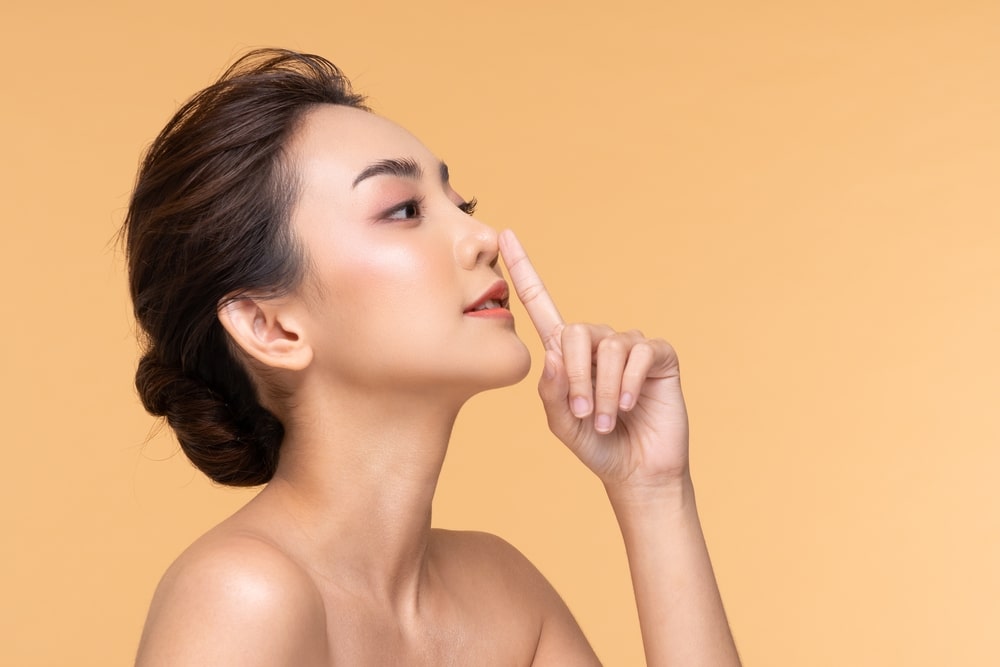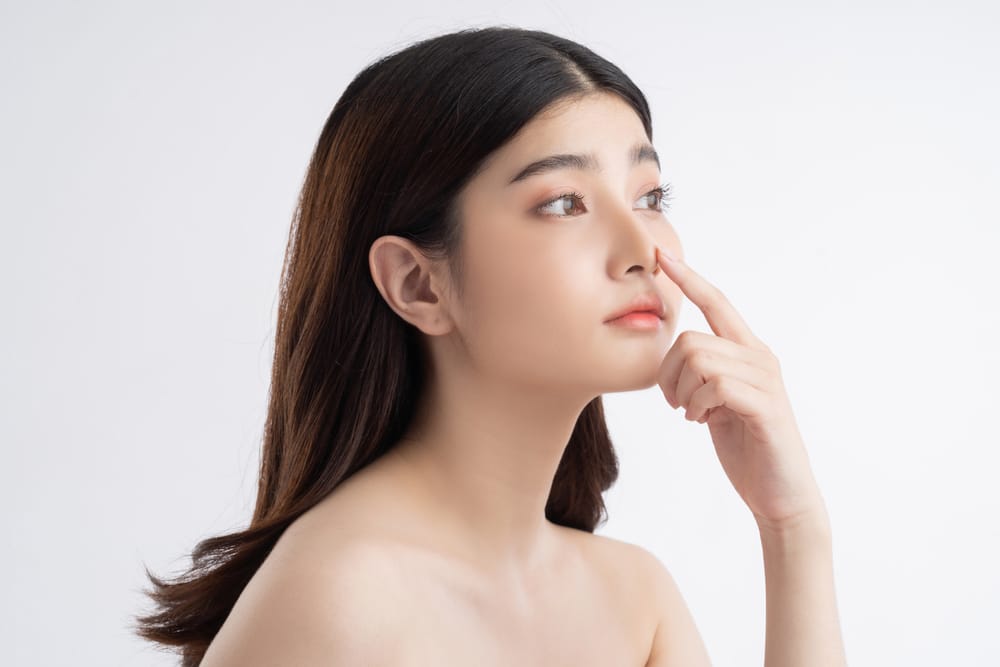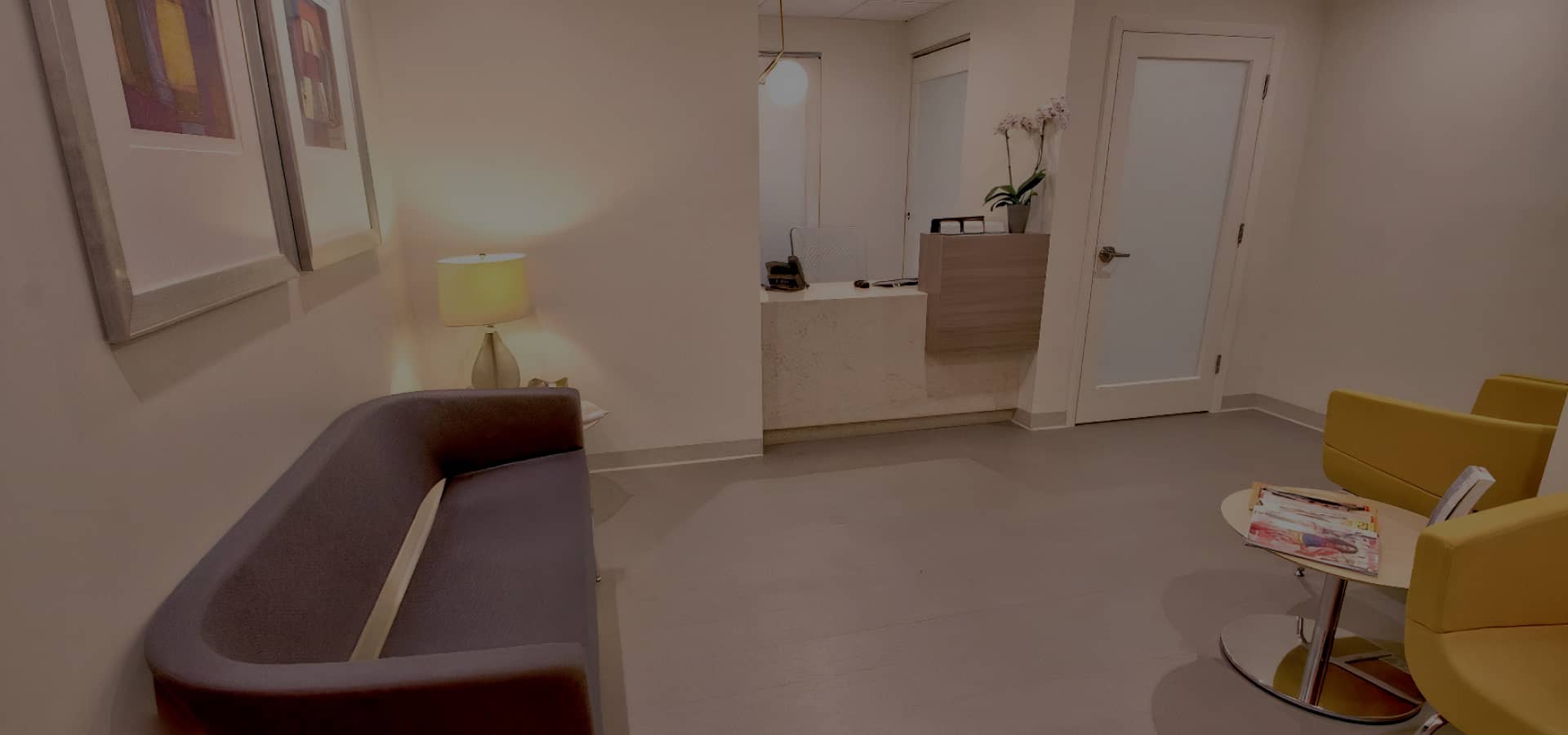Asian rhinoplasty, a form of nasal reshaping surgery, is a nuanced procedure that caters to the distinctive features of the Asian nose.
Dr. Anthony Bared, a double board-certified surgeon based in Miami, Florida, is a trusted expert in this field. His approach to Asian rhinoplasty is rooted in a deep understanding of Asian nasal features combined with an artistic approach to surgery.
Understanding Asian Rhinoplasty: An Artistic Approach
Asian rhinoplasty requires understanding the Asian patient’s unique facial anatomy and the individual’s aesthetic concerns. It aims to enhance natural beauty and balance aesthetics and functionality, all while preserving ethnic identity. The procedure considers aesthetic goals like refining nasal contour and enhancing nasal definition without affecting breathing.
Anatomy and Diversity in Asian Nasal Features

The Asian rhinoplasty procedure considers the unique and diverse anatomy of Asian noses, which often have a lower nasal bridge, a broader base, and a rounder, bulbous nasal tip compared to Caucasian noses. The nasal bones and nasal septum in Asian noses are typically less prominent, leading to a flat nose bridge and reduced nasal tip projection. The nasal dorsum is less noticeable, resulting in a flat appearance.
By addressing these specific anatomical characteristics, Asian rhinoplasty aims to create a nose that not only aligns with individual preferences but also maintains ethnic identity.
Customization in Technique: Adapting to Individuality
A customized Asian rhinoplasty requires an expert understanding of the patient’s facial anatomy and aesthetic goals.
Dr. Anthony Bared, a board-certified Asian rhinoplasty surgeon, uses various rhinoplasty techniques to cater to his Asian rhinoplasty patients. These techniques include closed rhinoplasty (with all incisions within the nasal cavity), open rhinoplasty with a minimal incision on the columella, and liquid rhinoplasty, a non-surgical alternative using injectable fillers.
Bridge Augmentation Techniques
Nose bridge augmentation is a common technique that aims to enhance the height or projection of the nose. This procedure is particularly significant for patients with a flat bridge, a common Asian nose characteristic. The augmentation of a flat nasal bridge can be achieved through various advanced techniques, and the surgical technique can only be chosen after a consultation with the plastic surgeon.
Tip Refinement and Definition
Tip refinement and definition are integral parts of the Asian rhinoplasty procedure. The goal is to enhance the nasal tip projection, creating a refined shape that complements the patient’s Asian features. This process is often achieved through the use of cartilage grafts, where pieces of ear, rib, or septal cartilage are used to build up the tip and provide better definition.
In other cases, suture techniques can be precisely placed to give the tip support and definition. The choice of technique will depend on the individual patient’s nasal anatomy, aesthetic goals, and the surgeon’s expertise.
Alar Base Modification
Alar base modification, or nostril narrowing, is a common request in Asian rhinoplasty. The width of the nostrils might be adjusted by excising excess nasal tissue or possibly with suture techniques.
The surgeon must carefully consider the patient’s overall facial features and proportions when performing alar base modification to ensure a harmonious result. To preserve the patient’s ethnic identity, the new look should blend well with the patient’s facial features instead of having a “pasted-on appearance.”

Considerations for Dorsal and Tip Aesthetics: Creating Symmetry
Asian rhinoplasty involves creating symmetry between the dorsal and tip aesthetics, considering the balance of the nose with other facial features. Procedures include bridge augmentation, tip refinement, and alar base modification.
The goal is to meet the patient’s aesthetic and functional goals, creating a natural-looking nose that blends with their ethnic features and doesn’t hinder breathing. This balance is crucial for a successful Asian rhinoplasty.
Implants and Grafts: Custom Solutions
The utilization of implants and grafts is prevalent in Asian rhinoplasty and deserves more attention, as these elements offer the essential support and framework needed for Asian nose reshaping.
Autologous grafts are frequently the preferred choice due to their lower susceptibility to infection or rejection. These grafts can be extracted from various areas of the body, such as ear cartilage or rib cartilage.
Conversely, synthetic implants can yield immediate and significant results, but they come with a higher risk of complications.
Functional Considerations: Ensuring Nasal Functionality
While the aesthetic goals of Asian rhinoplasty are important, ensuring the functionality of the nose is equally crucial. The surgeon must consider the impact of the surgical changes on the patient’s ability to breathe. This can be a delicate balance, as some procedures that enhance the nose’s appearance may compromise its functionality.
For instance, narrowing the nostrils too much during alar base modification can restrict airflow. Similarly, overly aggressive augmentation of the nasal bridge or tip can distort the nasal architecture, causing a nasal obstruction. The surgeon must carefully plan and execute the procedures to achieve a balance between aesthetics and functionality, ensuring a successful outcome for the patient.

Postoperative Care and Follow-Up: Ensuring Optimal Results
After undergoing an Asian rhinoplasty surgery, the patient’s journey towards achieving a balanced, natural, and attractive-looking nose continues. The postoperative care and follow-up phase is a critical part of the entire experience, ensuring optimal results and a successful recovery.
Patients are typically allowed to return home the day after surgery, as most Asian rhinoplasty procedures are outpatient procedures. However, it’s essential to follow the surgeon’s postoperative care instructions meticulously. These may include:
- Keeping the head elevated reduces swelling and improves blood supply to the nasal tissues.
- Applying cold compresses to manage bruising and discomfort.
- Taking prescribed medication to control pain and prevent infection.
- Avoid strenuous activities, including swimming, for several weeks after surgery to prevent complications such as blood pressure spikes or capsular contracture.
- Refraining from touching or disturbing the nose area to allow the surgical incisions to heal and prevent visible scarring.
Follow-up visits with the Asian rhinoplasty surgeon are scheduled at regular intervals, usually days after surgery, then weeks after surgery, and finally months after surgery. These visits allow the surgeon to monitor the healing process, assess the results of the Asian nose job surgery, and address any complications or concerns promptly.
The Artistry of Asian Rhinoplasty and the Importance of a Skilled Surgeon
Asian rhinoplasty is a complex and intricate facial plastic surgery that requires a deep understanding of the unique anatomical features of Asian noses and learning the patient’s aesthetic preferences. This procedure is not just a surgical intervention. It is an art form that requires a skilled plastic surgeon with extensive experience in Asian rhinoplasty techniques (including non-surgical Asian rhinoplasty).
Dr. Anthony Bared, a board-certified plastic surgeon based in Miami, Florida, is a trusted expert in this field. His approach to Asian rhinoplasty is rooted in a deep understanding of the diversity in Asian nasal features, complimented by an artistic approach to surgery. Schedule a consultation today for a custom Asian rhinoplasty surgery plan.

